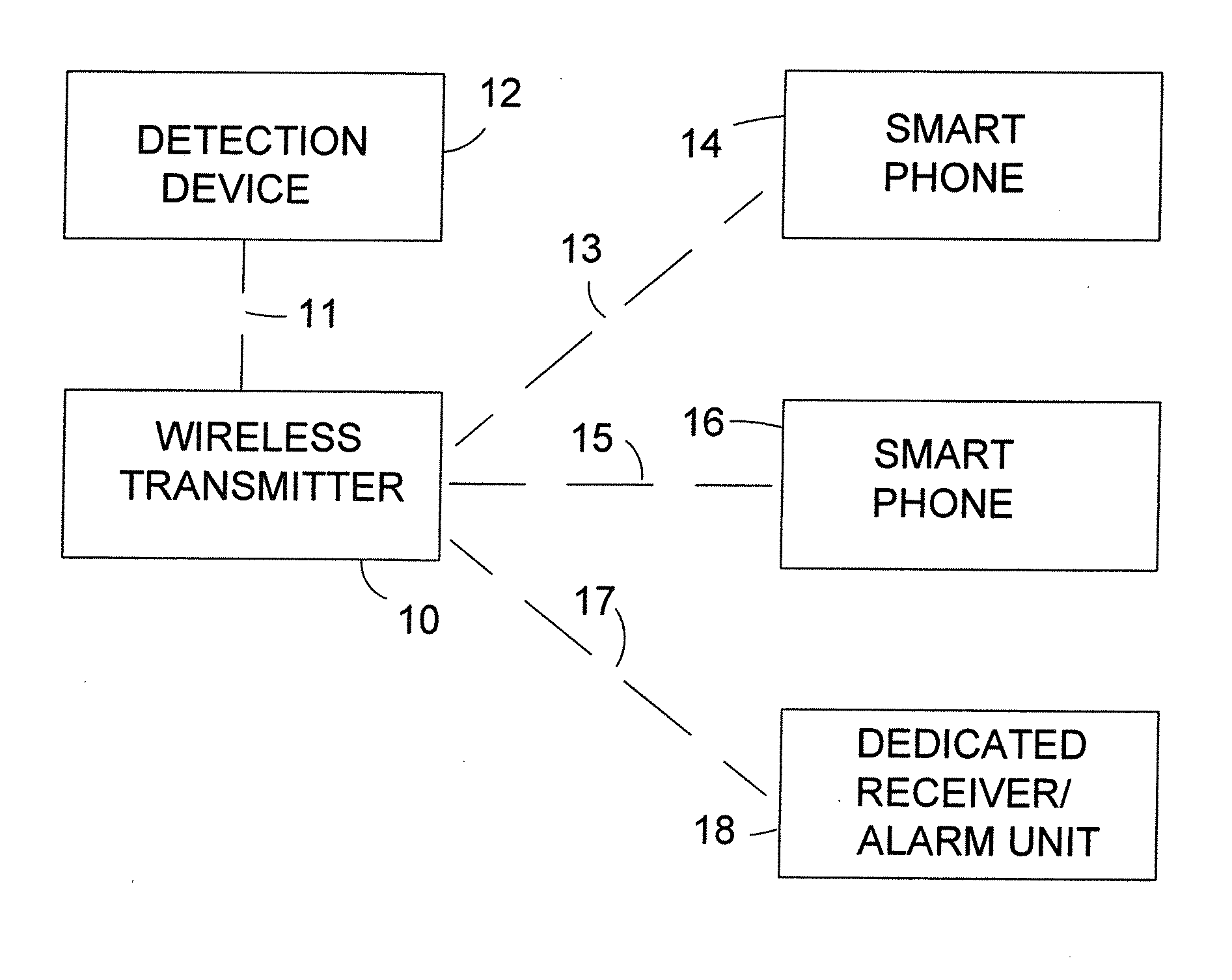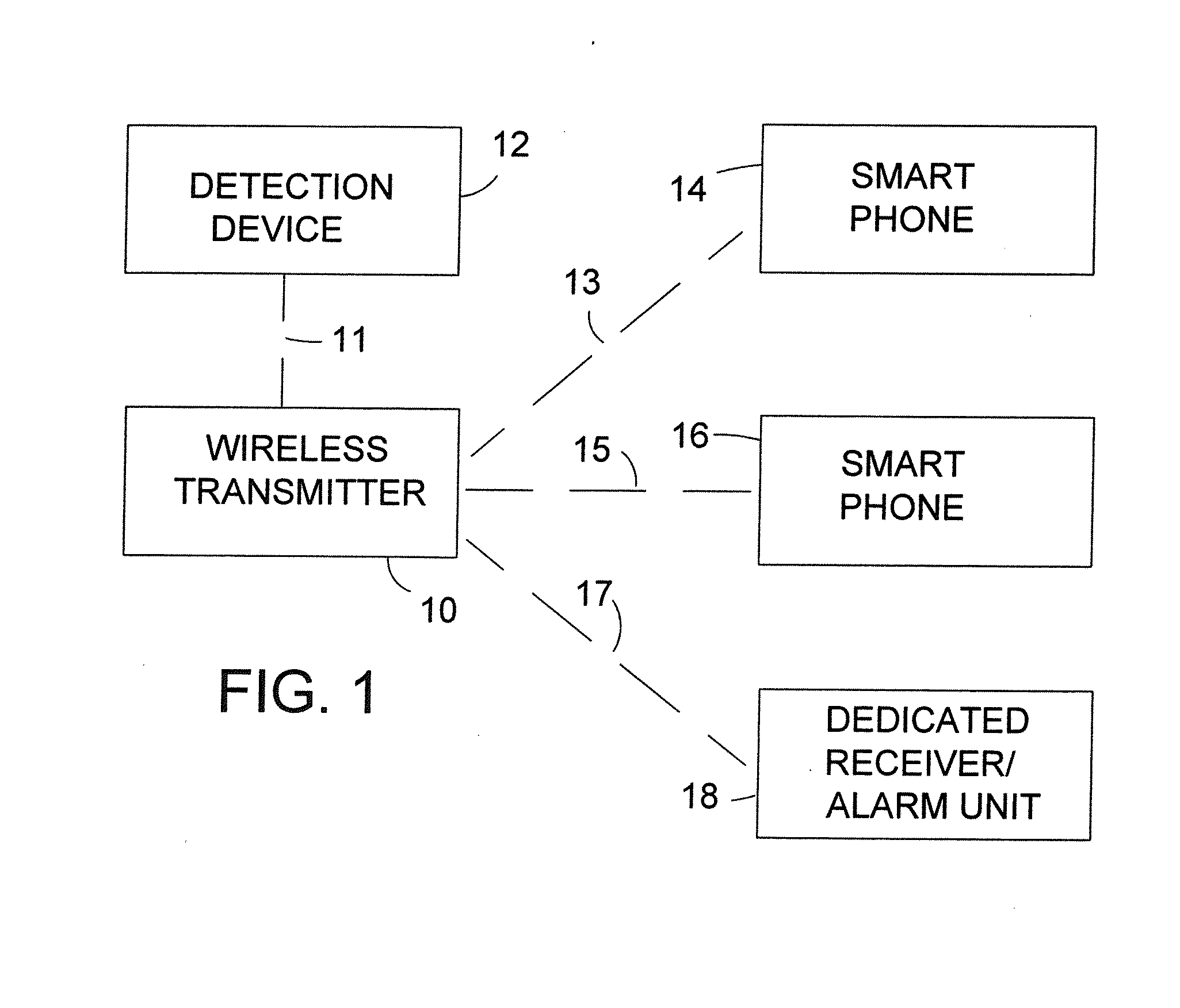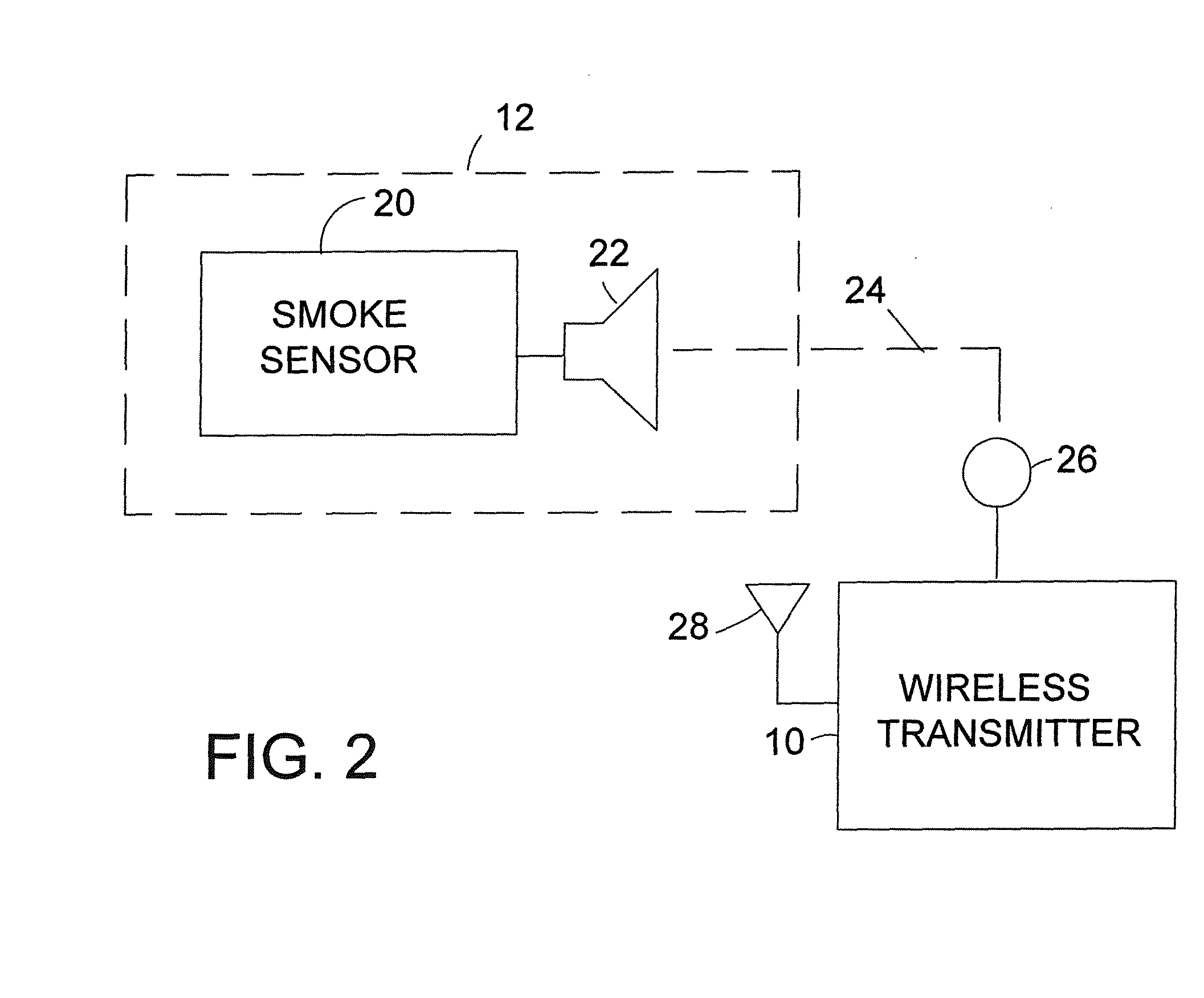Alarm system
a technology of alarm system and alarm system, which is applied in the direction of fire alarms, instruments, electrical equipment, etc., can solve the problems of alarm that cannot be heard in a remote bedroom, its own hazards, and already blocked evacuation paths
- Summary
- Abstract
- Description
- Claims
- Application Information
AI Technical Summary
Benefits of technology
Problems solved by technology
Method used
Image
Examples
Embodiment Construction
[0034]In its simplest form, the system of the invention comprises a detection unit, e.g., a smoke detector, a wireless transmitter associated with the detection unit, and a receiver responsive to the signal emitted by the wireless transmitter and incorporating an alarm device for alerting an individual in close proximity to the receiver. In a typical system, as shown in FIG. 1, a wireless transmitter 10 is in sufficiently close proximity to a detection device 12, e.g., a conventional smoke detector, that it can be activated by the alarm sound emitted by the detection device and transmitted to the detection device through the air over path 11. Activation by sound can be accomplished easily and reliably if the wireless transmitter is located in the same room, and not more than about 30 meters from the detection device.
[0035]The wireless transmitter is preferably a wireless local area network (WLAN) transmitting device operating under a suitable wireless standard such as IEEE 802.11, a...
PUM
 Login to View More
Login to View More Abstract
Description
Claims
Application Information
 Login to View More
Login to View More - R&D
- Intellectual Property
- Life Sciences
- Materials
- Tech Scout
- Unparalleled Data Quality
- Higher Quality Content
- 60% Fewer Hallucinations
Browse by: Latest US Patents, China's latest patents, Technical Efficacy Thesaurus, Application Domain, Technology Topic, Popular Technical Reports.
© 2025 PatSnap. All rights reserved.Legal|Privacy policy|Modern Slavery Act Transparency Statement|Sitemap|About US| Contact US: help@patsnap.com



